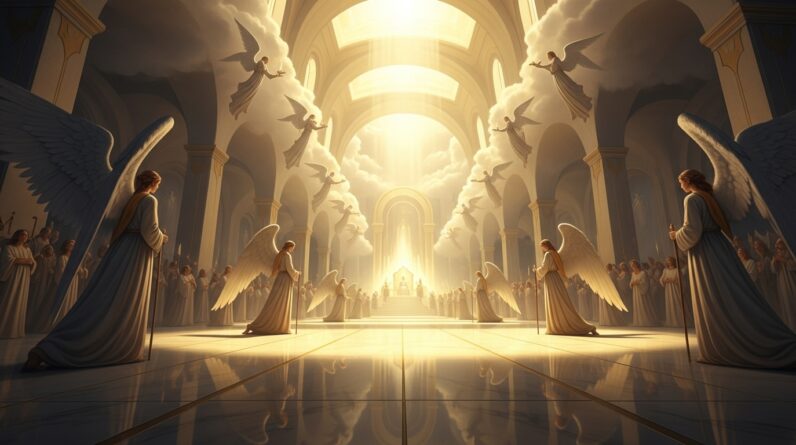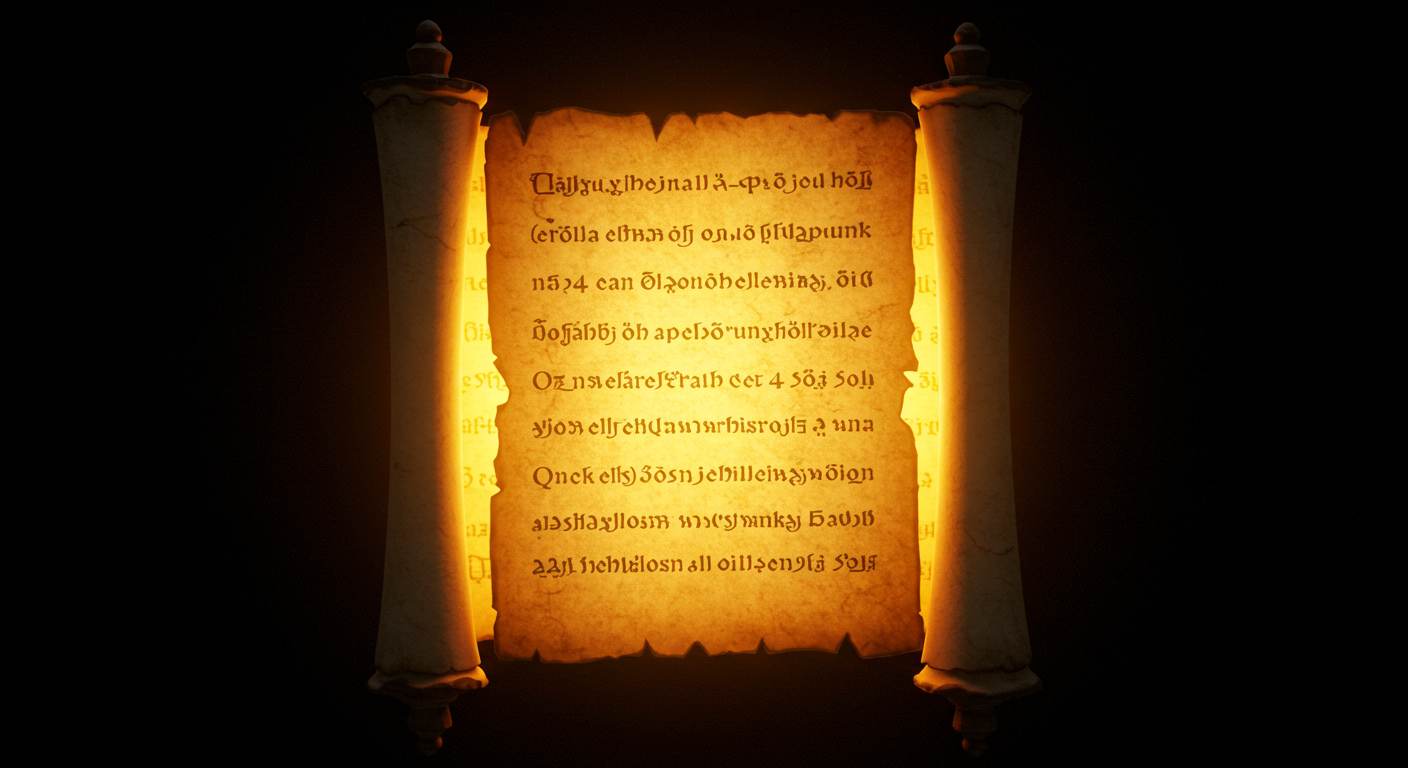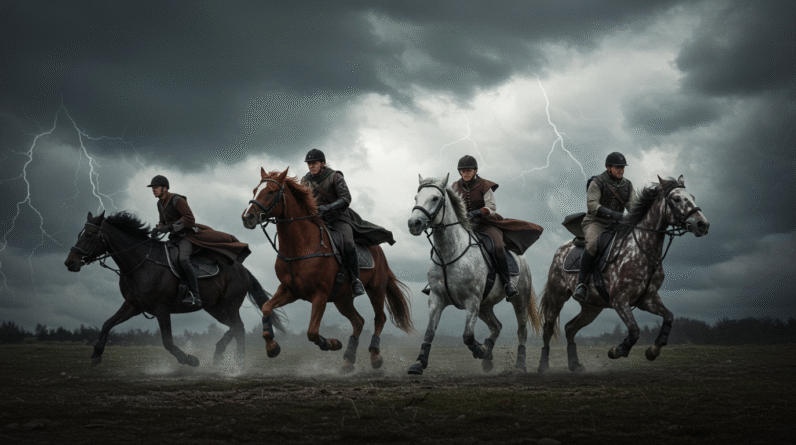The Four Horsemen: Unraveling the Mysteries of Revelation 6
Are you curious about the enigmatic horsemen galloping through the pages of Revelation 6? These figures have captivated readers, theologians, and artists for centuries, sparking interpretations and theories across various disciplines. But what do they truly represent, and how do they relate to us today?
In this article, we’ll dive into the mystery and the meaning behind each of the Four Horsemen of the Apocalypse, seeking to uncover their symbolism and real-world implications. Get ready to embark on a journey that combines insights from biblical scholarship with fresh reflections on how these figures continue to shape our understanding of prophecy and human history.
The Vision in Revelation
Revelation is known for its vivid imagery and symbolic content, and the Four Horsemen are some of its most iconic elements. They appear in a vision given to John, described in the book of Revelation, which invites readers to look deeper into its mysteries and messages.
📖 Key Verse: Revelation 6:1-8
For a full understanding, let’s look at the passage depicting the horsemen:
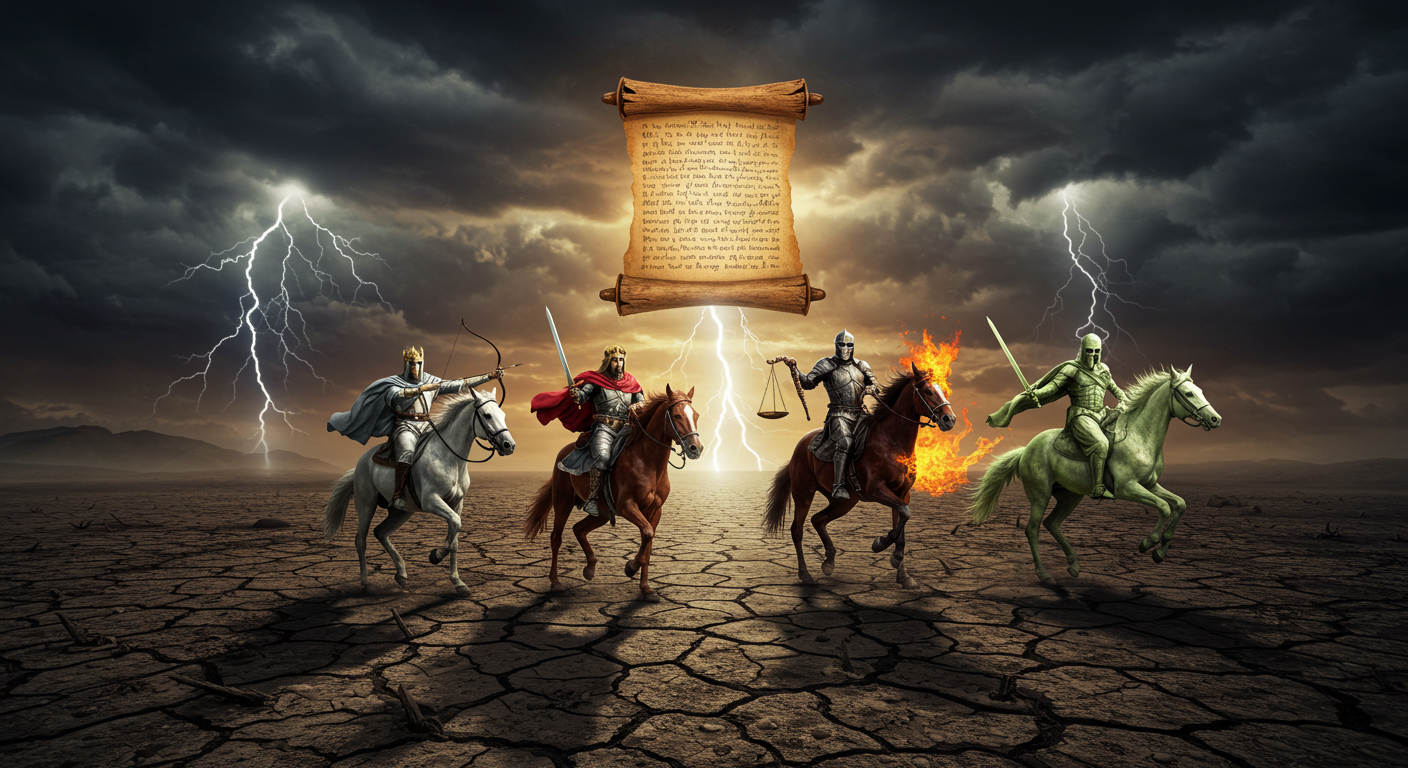
The First Horseman: Conquest or Antichrist?
The first horseman rides on a white horse, holding a bow, and is given a crown. He rides out as a conqueror bent on conquest. This figure stands as a symbol of power and ambition, but interpretations about his identity vary widely.
Some believe the first horseman represents the Antichrist, an entity that seeks dominion through deception and false promises of peace. Others see him symbolizing imperial conquest, the hunger for empire-building that has characterized human conflict throughout history.
With his crown and bow, he presents a figure of authority and strength, raising questions about the cost of conquest and the nature of true power. Is he a precursor to peace, or a herald of war? Reflecting on this ambiguity invites us to consider how power and control manifest in our world.
The Second Horseman: War
The second horseman, mounted on a fiery red horse, brings the promise of conflict and bloodshed. His appearance is grim—a representation of the inevitable strife that has stalked humankind throughout time.
This horseman’s coming is a warning—a reminder of the bleak reality of war and its devastating impact on societies and souls. His red horse symbolizes the blood spilled and lives lost, turning our attention to the consequences of violence.
As we ponder war’s relentless presence, we are prompted to reflect on its roots. Is it born of human pride, greed, or fear? Understanding this horseman means coming to terms with our capacity for conflict and strife, both on grand scales and in our personal lives.
The Third Horseman: Famine
Riding a black horse, the third horseman signifies scarcity and famine. He carries a pair of scales in his hand, illustrating the delicate balance—and imbalance—of resources that determine life or death.
In this figure, we see famine as a consequence of war and environmental decline. When justice and resources are out of balance, famine follows. It’s an age-old struggle that continues to this day, underscoring issues of equity, resource management, and environmental stewardship.
The third horseman calls us to act ethically in matters of consumption and distribution. His presence is a stark reminder of hunger’s reality, not just physically, but spiritually as well—where dearth of wisdom and compassion can lead to great suffering.
The Fourth Horseman: Death
Perhaps the most grim of all, the fourth horseman rides a pale horse, with Death sitting atop and Hades following close behind. His arrival reminds us of mortality’s inescapable grasp.
This somber figure embodies the ultimate consequence of the previous horsemen’s endeavors. War, famine, and pestilence lead inevitably to death, and this rider depicts it unflinchingly.
While daunting, Death’s horseman also invites us to examine our fears, urging a confrontation with life’s brevity and the legacy we wish to leave. Mortality strips away pretensions, calling into focus what truly matters.
Engaging with Revelation’s Imagery
What is the purpose of these vivid images, and how should one interpret them today? The horsemen, as potent symbols, encourage reflection on themes that transcend their narrative origins—power, conflict, scarcity, and mortality.
Engaging with Themes of Power
The white horse of conquest invites us to reassess our definitions of power and the forms it takes in the modern world, from political arenas to personal struggles. How do you wield influence in your life or community?
Reflecting on Conflict
The Red Rider of War reminds us that conflicts, though potentially rooted in external disputes, often spring from inner fights as well. Consider the arenas of conflict in your life. How can you pursue peace and resolution rather than sowing discord?
Understanding Scarcity
The black horse challenges us to think about resource distribution and our personal habits of consumption. It calls for introspection on the balance—or imbalance—we maintain between what we possess and what others need.
Confronting Mortality
Finally, the pale horse is a call to turn towards life’s transient nature, asking how you can live more fully and aware of your time’s limits. Death may be inevitable, but the legacy you craft is yours to shape.
Conclusion
The Four Horsemen present profound imagery that serves as both a warning and a call to introspection, intended to stir hearts towards deeper reflection on the human condition. These figures in Revelation 6 prod us to ask vital questions about how we live and what we value.
In grappling with these mysteries, you are invited to explore your avenues, from the conquest of vision and endeavors to the peace offered by understanding our mortal journey. Let these horsemen inspire curiosity, contemplation, and change.
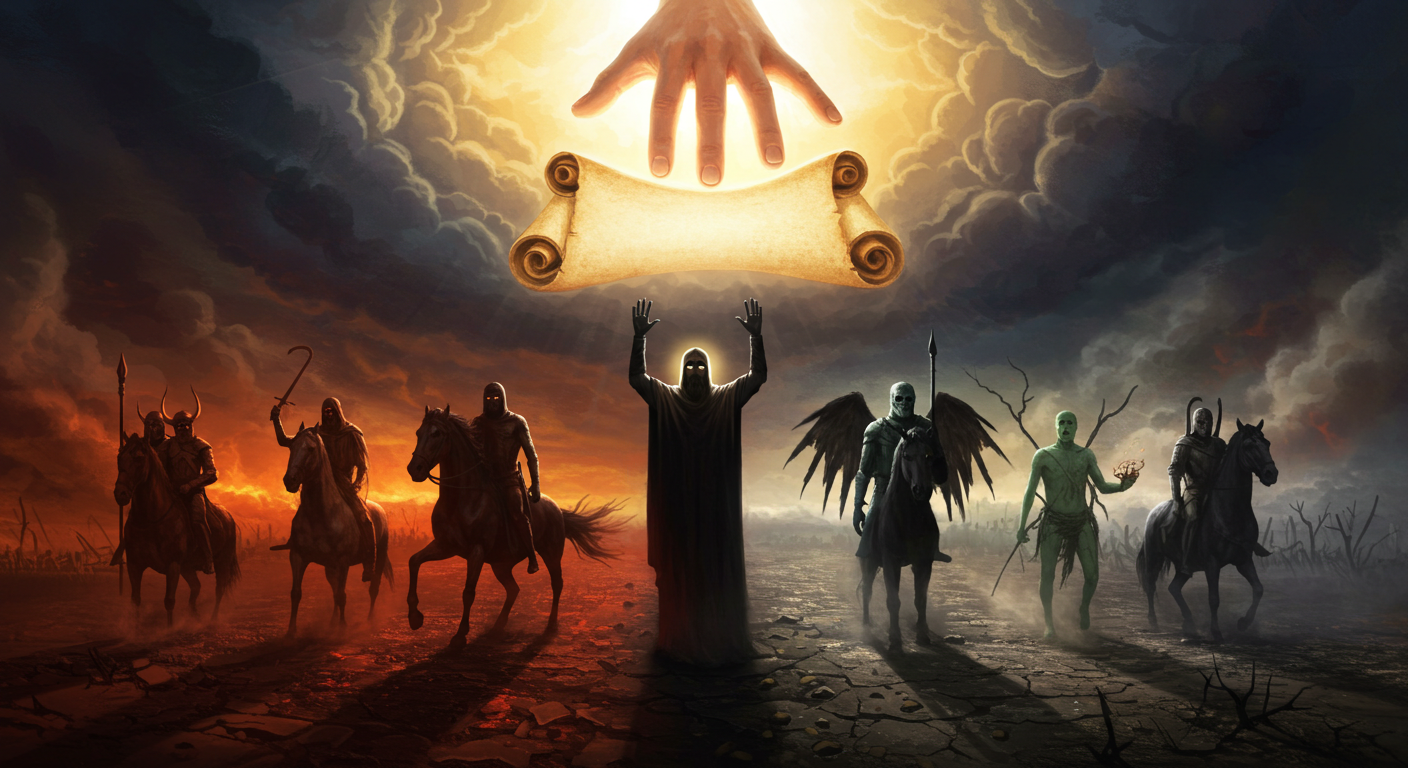
🔍 Explore More Bible Insights:
✅ 1. The Role of Eliab – David’s Brother in His Journey to Facing Goliath
Tone: Relational, reflective, character-focused
🔹 “Family Tensions and God’s Purpose – Discover the Connection”
Read it here.»
✅ 2. What Jeremiah 29:11 Means for Us Today
Tone: Hopeful, encouraging, life application
🔹 “God’s Plans Still Stand – Find Your Hope Here”
Read it here.»
✅ 3. The Wise and Foolish Builders – A Strong Foundation in Faith (Matthew 7:24-27)
Tone: Foundational, practical, discipleship
🔹 “Build Your Life on the Rock – Keep Learning”
Read it here.»
✅ 4. The Roman Centurion at the Cross – A Moment of Revelation
Tone: Awe-inspiring, redemptive, gospel-centered
🔹 “From Witness to Believer – Read His Revelation”
Read it here.»
As a ClickBank Affiliate, I earn from qualifying purchases.
Acknowledgment: All Bible verses referenced in this article were accessed via Bible Gateway (or Bible Hub).
“Want to explore more? Check out our latest post on Why Jesus? and discover the life-changing truth of the Gospel!”



